Brussels – Now Ireland is in, too. The European Commission announced today (July 31) that it welcomed Dublin’s decision to join the Migration and Asylum Pact, as notified on June 27 in Brussels. “ By opting in, Ireland shows solidarity with Member States under pressure – and can count on EU support in time of need,” said Home Affairs Commissioner Ylva Johansson, calling the accession “a vote of confidence in the Migration and Asylum Pact, in our ability to jointly manage migration.”
With the adoption of the decisions by the EU Commission, as of June 2026, seven legislative acts of the Migration and Asylum Pact will fully come into force also in Ireland: the Reception Conditions Directive, the Qualification Regulation, the Asylum Procedures Regulation, the Union Framework Regulation on Resettlement, the Asylum and Migration Management Regulation, the EURODAC Regulation, and the Crisis and Force Majeure Regulation. “Ireland will benefit from additional operational, technical, and financial support from the Commission and EU Agencies throughout the Pact implementation process,” the EU executive points out, recalling Dublin’s obligation to transpose the new legal rules into practice, just like the other 25 member states. After Ireland’s decision, only Denmark is using the opt-out option from EU legislation on migration and asylum.
After the approval process of the pact that lasted an entire legislature and its entry into force on June 11, the Migration and Asylum Pact began its implementation phase, which will last exactly two years before fully entering into force on June 12, 2026. The joint implementation plan presented by the EU Commission is based on 10 interdependent building blocks (or ‘building blocks’), all of which must be implemented to enable the proper functioning of a very complex piece of legislation. The real work, however, lies with the single countries because each member state must establish a national implementation plan by December 12, 2024, while drafts are due by October to receive support from the Commission in time. Countries must submit national contingency plans must by April 2025, and July 1, 2025, will be the deadline for establishing national coordination structures and appointing the national coordinator.
The basis of the Migration and Asylum Pact
The new Migration and Asylum Pact system is based on the relationship between solidarity and responsibility in managing migrants among the 27 member states. The former concept permeates the Regulation for the Management of Asylum and Migration (RAMM), which in no way overrides the cardinal principle of the 2013 Dublin Regulation, namely that the task of examining the asylum claim of a person who enters the EU territory irregularly lies with the EU country of first arrival. Countries like Italy, Greece, Malta, Cyprus, and Spain will be responsible for applications. Other member states that want to ‘Dublin’ (i.e., extradite) these migrants -including minors and those applying for reunification with siblings – will have to send a notification, no longer a reciprocal due process request in agreement with the country of first arrival, as is the case today. After the Regulation enters into force – 24 months after its publication in the EU Official Journal – the now-famous mandatory solidarity mechanism for all Twenty-Seven (based on GDP and population) will kick in, equalizing the three forms of solidarity: relocations of migrants, financial contributions, or support to third countries. Contributions to member countries can go to reception systems and funding of fixed and mobile border facilities through the Border and Visa Management Instrument (BMVI) and the Asylum, Migration, and Integration Fund (AMIF). There will be no mandatory relocation for migrants disembarked after search and rescue operations at sea. There is no legal representation, just counseling, for those under the RAMM procedure.
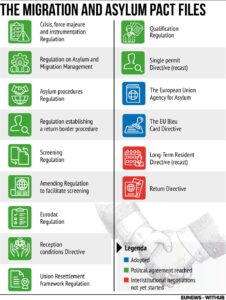 The concept of accountability mostly relates to the Asylum Procedures Regulation (APR) and increases only those provided for countries of first entry. It will automatically apply if there is a risk for security threat issues – including unaccompanied minors – of “deception of authorities” or if the migrant comes from a country with a recognition rate of less than 20 percent. Border procedures will provide de facto detention, with no exemptions even for families with children under 12, nor legal representation, nor a stay for appeals against most decisions (the exception is for the inadmissibility of those based on the concept of “safe third country” and for unaccompanied minors). The “Safe Third Country” is crucial to this Regulation, with EU and national lists provided to justify and expedite rapid returns out of the Union, unless there are links between the person and the state from where they come that preclude their safety. New accountability obligations include completing the examination of an asylum application through the border procedure within six months (APR), extending the responsibility period for handling applications for 20 months, and still at 12 months for search and rescue operations at sea (RAMM). The annual ceiling for border procedures is 30,000 people, based on a formula that considers the number of irregular border crossings and expulsions in the previous three years.
The concept of accountability mostly relates to the Asylum Procedures Regulation (APR) and increases only those provided for countries of first entry. It will automatically apply if there is a risk for security threat issues – including unaccompanied minors – of “deception of authorities” or if the migrant comes from a country with a recognition rate of less than 20 percent. Border procedures will provide de facto detention, with no exemptions even for families with children under 12, nor legal representation, nor a stay for appeals against most decisions (the exception is for the inadmissibility of those based on the concept of “safe third country” and for unaccompanied minors). The “Safe Third Country” is crucial to this Regulation, with EU and national lists provided to justify and expedite rapid returns out of the Union, unless there are links between the person and the state from where they come that preclude their safety. New accountability obligations include completing the examination of an asylum application through the border procedure within six months (APR), extending the responsibility period for handling applications for 20 months, and still at 12 months for search and rescue operations at sea (RAMM). The annual ceiling for border procedures is 30,000 people, based on a formula that considers the number of irregular border crossings and expulsions in the previous three years.
What happens when migrant people arrive
Once migrants arrive at the Union’s borders, the Regulation on Screening of the Migration and Asylum Pact will provide a seven-day detention procedure to divide the regular (RAMM) or expedited (APR) procedures for processing their asylum claims. Since the so-called ‘fiction of non-entry’ has remained – that is, anyone screened in a special center will not be considered legally on the territory of the member state and, therefore, of the EU – migrants will be detained as they will have to remain at the disposal of the authorities without the possibility of entering national soil. Some guarantees include the possibility for applicants to have access to a copy of the screening form and to preserve the “relevant rules on detention” set out in the 2008 Return Directive (the revision contained in the Migration and Asylum Pact is the only dossier that is certain to fail). However, the monitoring mechanism – which does not necessarily include NGOs but can do so at states’ discretion – does not apply to border surveillance activities (with normalization of racial profiling). If the state recognizes a security threat, it can grant national authorities direct access to all data on the person in all databases.

(credits: Alessandro Serranò / Afp)
According to the EURODAC Regulation, all migrants receiving temporary protection as of the age of 6 will have to accept to have their biometric data collected, even though under the General Data Protection Regulation (GDPR), processing is lawful only if the minor is at least 16 years old. The collection of photographic data of faces is included in the expansion of data access for national authorities, effectively giving the green light to mass surveillance of migrants arriving on EU soil. Security alerts have to be inserted into the EURODAC database during the screening process, and border procedures will include a whole range of new categories – such as irregular border crossing – also through the revision of the Entry and Exit System Review Regulation.
What happens in a crisis
One of the most controversial items in the Migration and Asylum Pact is the Regulation for Crises, Instrumentality, and Force Majeure, which deals with times when there is an exceptional or unexpected “mass arrival of people,” including following disembarkation after a search and rescue operation at sea. The Council negotiating position passed, which led to the inclusion of instrumentality (a Regulation that was initially a stand-alone and on which Parliament had not given the OK) for crises and force majeure, in cases where “a hostile third country or non-state actor encourages or facilitates the movement of third-country nationals and stateless persons” towards the EU external borders “with the aim of destabilizing the Union or a Member State” by putting “the essential functions of a Member State at risk.” NGOs are excluded from this definition, but only if they can demonstrate that their actions (at sea and otherwise) do not aim to destabilize, with clear risks of repercussions for the criminalization of solidarity.
There is no compulsory relocation of migrants between member countries in crises, but the same three modes of solidarity as in the RAMM Regulation (relocations, financial contributions, or support to third countries) will apply. Instead, this scenario will trigger derogations to the overall migration and asylum management system: the recognition rate threshold for which people can be admitted to border procedures (under the APR Regulation at 20 percent) will become 50 percent in force majeure situations, 60/70 percent in crisis, and 100 percent in instrumentality situations. Again, families with children under 12 are not excluded from the border procedures – the duration of which can be extended by an additional six weeks (compared with nine months in the APR) .
English version by the Translation Service of Withub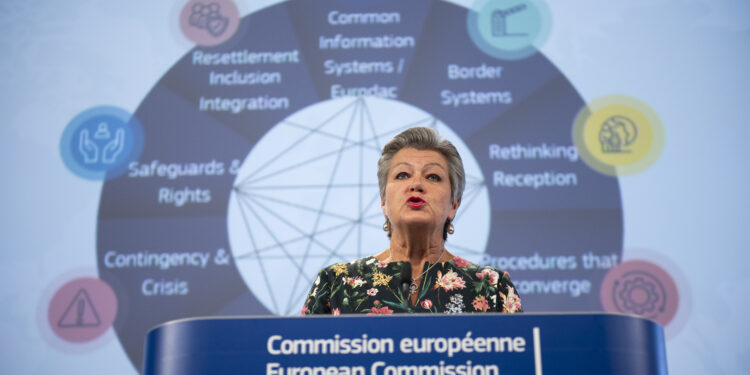

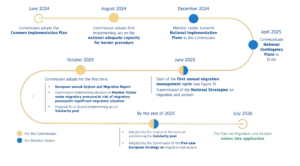
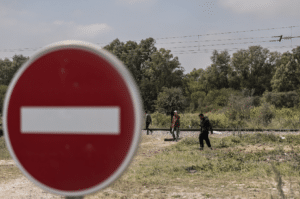


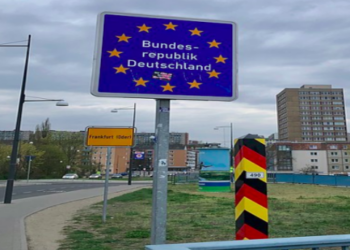

![La ministra degli Esteri della Finlandia, Elina Valtonen [Bruxelles, 18 novembre 2024]](https://staging.eunews.it/wp-content/uploads/2024/11/valtonen-350x250.png)





